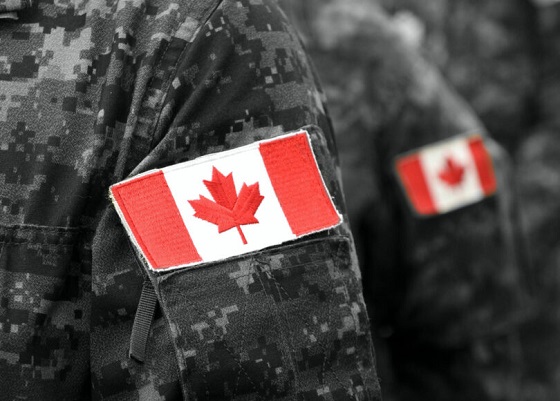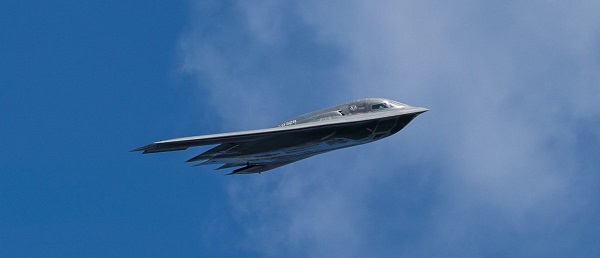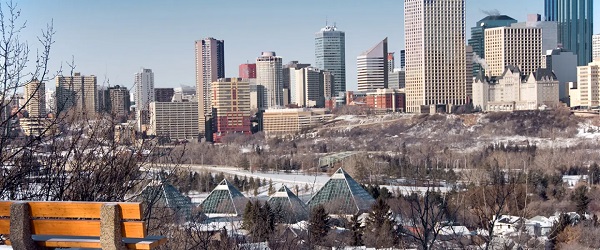armed forces
EXCLUSIVE: Canadian military saw 800% spike in vaccine injuries following COVID jab rollout

From LifeSiteNews
According to Canadian Armed Forces documents shared with LifeSiteNews, vaccine injuries rose from 14 in 2020 to a whopping 128 in 2021, with the vast majority being attributed to Moderna’s experimental COVID injection.
Documents obtained by LifeSiteNews show that the number of vaccine injuries in the Canadian Armed Forces rose over 800 percent in 2021, with the majority being attributed to Moderna’s experimental COVID vaccine.
According to Access to Information (ATIP) documents shared with LifeSiteNews, the CAF’s COVID vaccine injury figures skyrocketed from 14 cases in 2020 to a whopping 128 in 2021, representing an increase of over 800 percent. According to the data, the majority of events, over 100 of them, happened after receipt of Moderna’s COVID vaccine.
The documents also show that in 2022, the vaccine injury figures swelled even higher to 223 cases.
“We know it’s not effective, and now this data proves it’s not safe,” a CAF member told LifeSiteNews under the condition of anonymity.
“They fired hundreds of us for having the wisdom and the courage to stand up for our beliefs,” he continued. “They destroyed our careers, marriages and our families. And they sacrificed the credibility of the CAF to score political points. Every Canadian should be outraged that this is how they treat those who would lay down their lives to protect our country.”
The documents record vaccine injuries beginning in 2010 and ending in 2023. The CAF counted 6 injuries in 2010, 7 in 2011, 5 in 2012, 9 in 2013, 8 in 2014, 8 in 2015, 4 in 2016, 4 in 2017, 8 in 2018, 7 in 2019, and 14 in 2020.
However, beginning in 2021, when the COVID vaccine was mandated by the Canadian military, the number skyrocketed to 128 in 2021 and 223 in 2022.
Beginning in November 2021, the Liberal government under the leadership of Prime Minister Justin Trudeau mandated that 275,983 employees from the Royal Canadian Mounted Police, military and main federal departments provide proof of vaccination.
Those who failed to do so risked dismissal or suspension without pay. While there were provisions for medical and religious exemptions, these were rarely granted.
According to the documents, the CAF’s vaccine injury rate is higher than Health Canada’s average. Health Canada has recorded a total of 58,712 vaccine injuries from the COVID shots, or one in every 1,789 doses.
However, the CAF’s 2021 numbers show that 128 out of 162,190, or 1 out of 1,267, doses resulted in an injury. In 2022, the number was even higher at 223 out of 63,962 doses, or 1 out of 287 doses.
The recorded COVID vaccine injuries include myocarditis, Bell’s palsy, and pericarditis among other conditions. In addition to causing various menstrual issues, in one case, the COVID shot was listed as the cause of a miscarriage.
“Our female soldiers were forced to take this?” the CAF member questioned. “Whatever happened to GBA+?”
“They were even forcing this on pregnant soldiers without any hesitation whatsoever,” he declared.
The CAF has seen a drastic decline in numbers since COVID vaccines were mandated in 2021. According to information obtained in February, only 12,793 Canadians have joined the CAF in the past three years and 15,176 were released.
“It’s irresponsible that if you know something is dangerous in 2021, that you must notify people and stop doing it,” the CAF member argued. “Here they knew it was dangerous and they kept injecting people for years afterwards.”
“And on top of that, I know for a fact that there was not a single COVID death in the Canadian forces, and we were at the front lines of op laser, which was in the old folks’ homes at the beginning of the pandemic,” he continued.
armed forces
Ottawa’s Newly Released Defence Plan Crosses a Dangerous Line

From the Frontier Centre for Public Policy
By David Redman
Canada’s Defence Mobilization Plan blurs legal lines, endangers untrained civil servants, and bypasses provinces. The Plan raises serious questions about military overreach, readiness, and political motives behind rushed federal emergency planning.
The new defence plan looks simple on paper. The risks are anything but.
Canadians have grown used to bad news about the Canadian Armed Forces (CAF), but the newly revealed defence mobilization plan is in a category of its own.
After years of controversy over capability, morale, and leadership challenges, the military’s senior ranks now appear willing to back a plan that misunderstands emergency law, sidelines provincial authority, and proposes to place untrained civil servants in harm’s way.
The document is a Defence Mobilization Plan (DMP), normally an internal framework outlining how the military would expand or organize its forces in a major crisis.
The nine-page plan was dated May 30, 2025, but only reached public view when media outlets reported on it. One article reports that the plan would create a supplementary force made up of volunteer public servants from federal and provincial governments. Those who join this civil defence corps would face less restrictive age limits, lower fitness requirements, and only five days of training per year. In that time, volunteers would be expected to learn skills such as shooting, tactical movement, communicating, driving a truck, and flying a drone. They would receive medical coverage during training but not pensionable benefits.
The DMP was circulated to 20 senior commanders and admirals, including leaders at NORAD, NATO, special forces, and Cybercom. The lack of recorded objection can reasonably raise concerns about how thoroughly its implications were reviewed.
The legal context explains much of the reaction. The Emergencies Act places responsibility for public welfare and public order emergencies on the provinces and territories unless they request federal help. Emergency response is primarily a provincial role because provinces oversee policing, natural disaster management, and most front-line public services. Yet the DMP document seems to assume federal and military control in situations where the law does not allow it. That is a clear break from how the military is expected to operate.
The Emergency Management Act reinforces that civilian agencies lead domestic emergencies and the military is a force of last resort. Under the law, this means the CAF is deployed only after provincial and local systems have been exhausted or cannot respond. The Defence Mobilization Plan, however, presents the military as a routine responder, which does not match the legal structure that sets out federal and provincial roles.
Premiers have often turned to the military first during floods and fires, but those political habits do not remove the responsibility of senior military leaders to work within the law and respect their mandate.
Capacity is another issue. Combat-capable personnel take years to train, and the institution is already well below its authorized strength. Any task that diverts resources from readiness weakens national defence, yet the DMP proposes to assign the military new responsibilities and add a civilian component to meet them.
The suggestion that the military and its proposed civilian force should routinely respond to climate-related events is hard to square with the CAF’s defined role. It raises the question of whether this reflects policy misjudgment or an effort to apply military tools to problems that are normally handled by civilian systems.
The plan also treats hazards unrelated to warfighting as if the military is responsible for them. Every province and territory already has an emergency management organization that monitors hazards, coordinates responses and manages recovery. These systems use federal support when required, but the military becomes involved only when they are overwhelmed. If Canada wants to revive a 1950s-style civil defence model, major legislative changes would be needed. The document proceeds as if no such changes are required.
The DMP’s training assumptions deepen the concerns. Suggesting that tasks such as “shooting, moving, communicating, driving a truck and flying a drone” can be taught in a single five-day block does not reflect the standards of any modern military. These skills take time to learn and years to master.
The plan also appears aligned with the government’s desire to show quick progress toward NATO’s defence spending benchmark of two percent of GDP and eventually five percent. Its structure could allow civil servants’ pay and allowances to be counted toward defence spending.
Any civil servant who joins this proposed force would be placed in potentially hazardous situations with minimal training. For many Canadians, that level of risk will seem unreasonable.
The fact that the DMP circulated through senior military leadership without signs of resistance raises concerns about accountability at the highest levels. That the chief of the defence staff reconsidered the plan only after public criticism reinforces those concerns.
The Defence Mobilization Plan risks placing civil servants in danger through a structure that appears poorly conceived and operationally weak. The consequences for public trust and institutional credibility are becoming difficult to ignore.
David Redman had a distinguished military career before becoming the head of the Alberta Emergency Management Agency in 2004. He led the team in developing the 2005 Provincial Pandemic Influenza Plan. He retired in 2013. He writes here for the Frontier Centre for Public Policy.
armed forces
Global Military Industrial Complex Has Never Had It So Good, New Report Finds


From the Daily Caller News Foundation
The global war business scored record revenues in 2024 amid multiple protracted proxy conflicts across the world, according to a new industry analysis released on Monday.
The top 100 arms manufacturers in the world raked in $679 billion in revenue in 2024, up 5.9% from the year prior, according to a new Stockholm International Peace Research Institute (SIPRI) study. The figure marks the highest ever revenue for manufacturers recorded by SIPRI as the group credits major conflicts for supplying the large appetite for arms around the world.
“The rise in the total arms revenues of the Top 100 in 2024 was mostly due to overall increases in the arms revenues of companies based in Europe and the United States,” SIPRI said in their report. “There were year-on-year increases in all the geographical areas covered by the ranking apart from Asia and Oceania, which saw a slight decrease, largely as a result of a notable drop in the total arms revenues of Chinese companies.”
Notably, Chinese arms manufacturers saw a large drop in reported revenues, declining 10% from 2023 to 2024, according to SIPRI. Just off China’s shores, Japan’s arms industry saw the largest single year-over-year increase in revenue of all regions measured, jumping 40% from 2023 to 2024.
American companies dominate the top of the list, which measures individual companies’ revenue, with Lockheed Martin taking the top spot with $64,650,000,000 of arms revenue in 2024, according to the report. Raytheon Technologies, Northrop Grumman and BAE Systems follow shortly after in revenue,
The Czechoslovak Group recorded the single largest jump in year-on-year revenue from 2023 to 2024, increasing its haul by 193%, according to SIPRI. The increase is largely driven by their crucial role in supplying arms and ammunition to Ukraine.
The Pentagon contracted one of the group’s subsidiaries in August to build a new ammo plant in the U.S. to replenish artillery shell stockpiles drained by U.S. aid to Ukraine.
“In 2024 the growing demand for military equipment around the world, primarily linked to rising geopolitical tensions, accelerated the increase in total Top 100 arms revenues seen in 2023,” the report reads. “More than three quarters of companies in the Top 100 (77 companies) increased their arms revenues in 2024, with 42 reporting at least double-digit percentage growth.”
-

 Daily Caller2 days ago
Daily Caller2 days ago‘Almost Sounds Made Up’: Jeffrey Epstein Was Bill Clinton Plus-One At Moroccan King’s Wedding, Per Report
-

 Business17 hours ago
Business17 hours agoArgentina’s Milei delivers results free-market critics said wouldn’t work
-

 Alberta2 days ago
Alberta2 days agoHousing in Calgary and Edmonton remains expensive but more affordable than other cities
-

 Business1 day ago
Business1 day agoState of the Canadian Economy: Number of publicly listed companies in Canada down 32.7% since 2010
-

 International1 day ago
International1 day agoDOJ fails to fully comply with Friday deadline for Epstein files release
-

 Bruce Dowbiggin1 day ago
Bruce Dowbiggin1 day agoHunting Poilievre Covers For Upcoming Demographic Collapse After Boomers
-

 Business2 days ago
Business2 days agoTrump signs order reclassifying marijuana as Schedule III drug
-

 Alberta1 day ago
Alberta1 day agoAlberta’s new diagnostic policy appears to meet standard for Canada Health Act compliance


